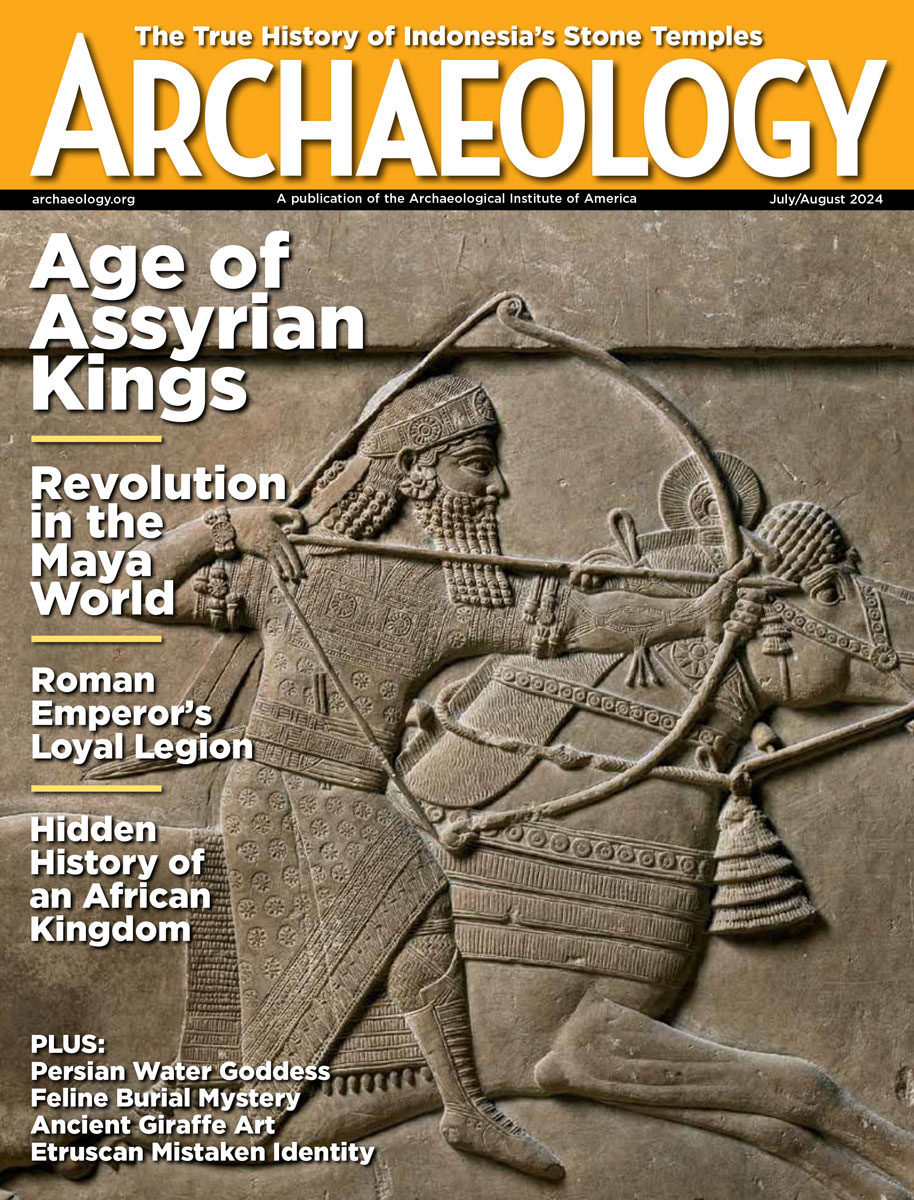Monday, July 14
July 14, 2008
A Greek man was arrested for digging tunnels from a well on his property to archaeological sites in Megara. Pottery and stones from an ancient wall were found in the tunnels, and artifacts and 20 bags of earth were found in his home.
Part of the 1,000-year-old Pfeffer site in St. Clair County, Illinois, was bulldozed by a housing developer last month. “This is a very important site for the beginnings of Cahokia. This destruction is a significant loss. This was an emerging civilization,” said Tim Pauketat of the University of Illinois. Â
An Israeli lifeguard snorkeling at the ancient port of Yavne-Yam discovered a 2,500-year-old eye-shaped disc. “We know from drawings on pottery vessels … that this model was very common on the bows of ships and was used to protect them from the evil eye and envy, and was meant as a navigation aid and to act as a pair of eyes which looked ahead and warned of danger,” said Yaakov Sharvit of the Israel Antiquities Authority.  Â
In Australia, four Aboriginal rock carvings were revealed when an early twentieth-century road was removed on the Sydney Harbor foreshore. The engravings depict a man, two spirit men with rays emanating from their heads, and a school of fish. Â
Excavations at Rutgers Stadium in New Jersey have uncovered parts of the eighteenth-century settlement known as Raritan Landing, including the foundations of the Rising Sun Tavern, which operated between the 1730s and the 1840s. “We knew what we were looking for before we started this part of the project,” said archaeologist Rebecca Yamin.  Â
What could be a Roman legionary’s ceremonial lance has been uncovered in Caerleon, a Roman fortress in Wales. The staff was probably decorated with plumes, according to Peter Guest of Cardiff University.  Â
British scientists will study DNA from ancient bones from Jericho to develop treatments for tuberculosis.
FBI forensics personnel excluded archaeologists from the excavation of a skeleton found in Escalante, Utah. The bones are thought to belong to an American Indian man in his 50s or 60s, and were found with a musket, ammunition, and a bucket. “We try to work with law enforcement. If there is a possibility that there is a crime involved, we would want the police there, and vice versa if it’s an historic site. Neither of us benefit working in isolation,” said state archaeologist Kevin Jones. Â
Here’s another article on the plan to open up the sealed cave beneath the Pyramid of the Sun later this month. “We want to find out why the Teotihuacan people sealed it and when. Excavating the cave could give us some clues about what happened at Teotihuacan, about the fate of the city,” said Alejandro Sarabia, director of archaeology at Teotihuacan.
- Comments Off on Monday, July 14









